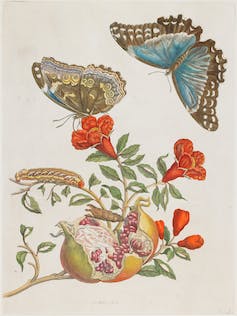
Uncommon Courses is an occasional series from The Conversation U.S. highlighting unconventional approaches to teaching.
Title of course:
Art & Science from Aristotle to Instagram
What prompted the idea for the course?
The idea for this course came out of my own research on intersections between art and science in the early modern period, roughly 1400-1700. In this time, the division between the arts and sciences was not as stark as people perceive it to be today. Many natural philosophers – the scientists of their day – like Galileo Galilei made images in the process of conducting their studies. However, they also relied on artists and artisans to communicate their ideas to a wider audience – they needed engravers, draftsmen and other graphic arts practitioners to make the images that would go into their books and published works.
In addition, throughout history the development of new technologies has affected artistic practices. The invention of the printing press and new photographic technologies allowed scientific ideas to be communicated in new ways to new audiences, but these inventions simultaneously created new artistic media.
What does the course explore?
In contemporary society, art and science are often characterized as diametrically opposed. However, knowledge making has been inextricably linked to image making since antiquity.

This image, made by Maria Sibylla Merian in 1705, is both a naturalist’s documentation and a work of art.
Maria Sibylla Merian via Minneapolis Institute of Art
One way we explore this relationship is by studying people from antiquity to the present who cross these realms. Leonardo da Vinci is a great example. People think of him as a master Renaissance painter, and he painted what is widely considered the most famous painting in the world, the Mona Lisa. But at the same time, he also pursued scientific questions about anatomy, botany and motion and was an inventor.
But there were other examples of people who pursued science and art together. In the 19th century, Anna Atkins was one of the first people to use an early photographic technique – the cyanotype – to study British plants and algae. The images she created are aesthetically beautiful but also created new knowledge within botany.
In the course, we also explore different technological developments that affected the arts, creating new materials and media. These include technologies such as the printing press, camera obscura, daguerreotype and digital art.
Why is this course relevant now?
We live in a visually saturated world, yet we often take in these images uncritically. My students encounter images in every aspect of their lives, in greater quantity and at a greater rate than ever before. Yet, people frequently accept these images as true depictions of reality, even when they are not.
Why do people assume a scientific image is divorced from…

